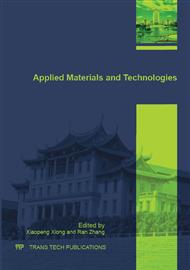p.75
p.79
p.85
p.90
p.97
p.101
p.107
p.112
p.117
Effect of Zirconium on Boron Removal in Electromagnetic Solidification Refinement of Silicon from Si-Al Melt
Abstract:
This work investigates the removal of B in Si by the addition of Zr in the electromagnetic solidification refinement of silicon-aluminum melts. As Zr has a strong affinity for B and can form the thermodynamically stable compound of ZrB2, the B content of lower-grade Si is expected to be effectively removed by adding a small amount of Zr to the Si-55 at% Al melt. The results show that Zr is strongly responsible for the decrease in B content of refined Si. The removal fraction of B significantly increased from 60.2% to 97.3% by adding a small amount of Zr (0 to 3500 ppmw). In addition, the removal fraction of Zr from Si was found to be as high as 98.6%; however, its residual content in the refined Si was significantly larger than its solid solubility in Si, possibly due to the non-equilibrium solidification occurring during the refining process.
Info:
Periodical:
Pages:
97-100
Citation:
Online since:
November 2015
Authors:
Price:
Сopyright:
© 2015 Trans Tech Publications Ltd. All Rights Reserved
Share:
Citation:


